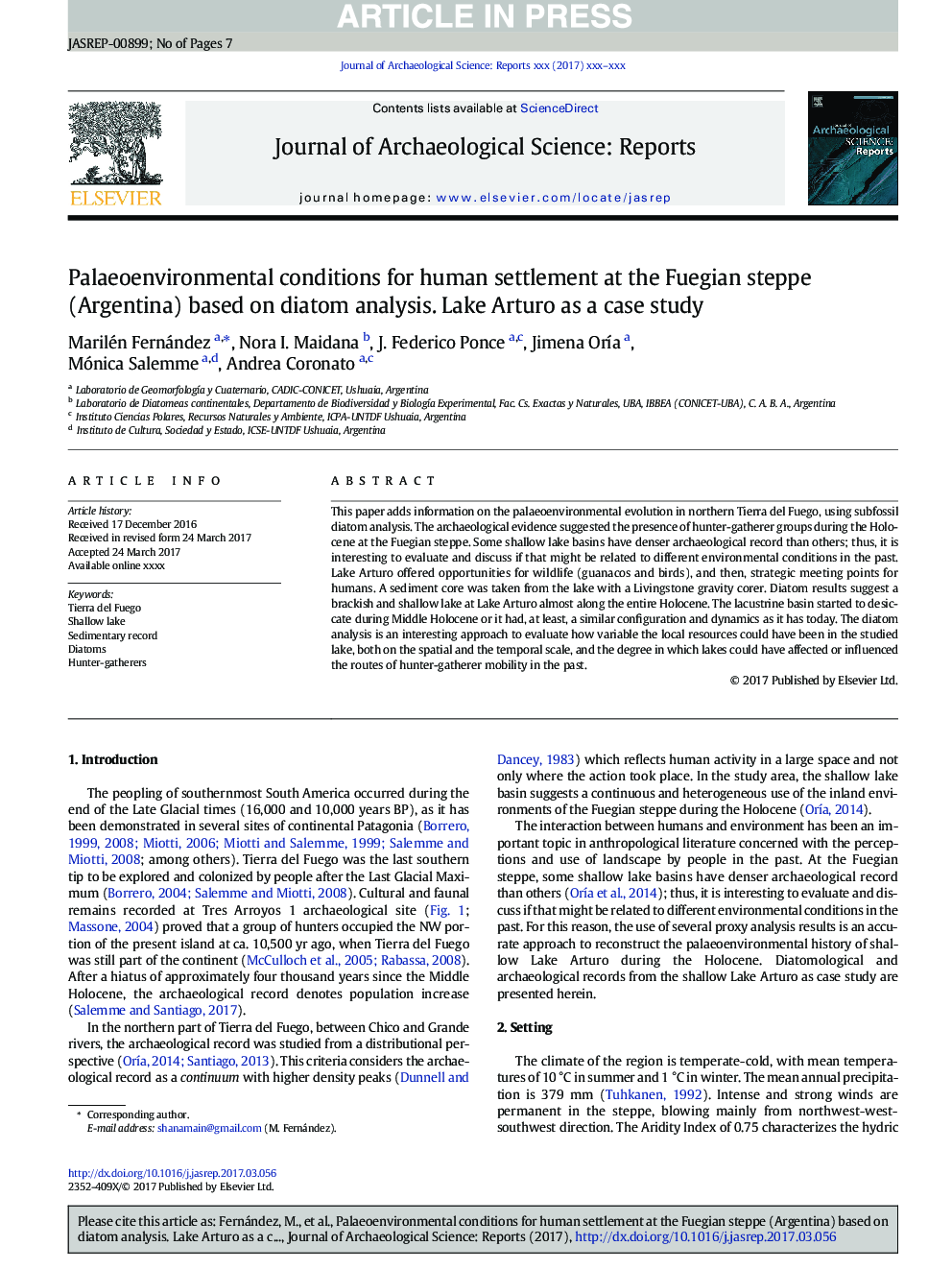| Article ID | Journal | Published Year | Pages | File Type |
|---|---|---|---|---|
| 7444406 | Journal of Archaeological Science: Reports | 2018 | 7 Pages |
Abstract
This paper adds information on the palaeoenvironmental evolution in northern Tierra del Fuego, using subfossil diatom analysis. The archaeological evidence suggested the presence of hunter-gatherer groups during the Holocene at the Fuegian steppe. Some shallow lake basins have denser archaeological record than others; thus, it is interesting to evaluate and discuss if that might be related to different environmental conditions in the past. Lake Arturo offered opportunities for wildlife (guanacos and birds), and then, strategic meeting points for humans. A sediment core was taken from the lake with a Livingstone gravity corer. Diatom results suggest a brackish and shallow lake at Lake Arturo almost along the entire Holocene. The lacustrine basin started to desiccate during Middle Holocene or it had, at least, a similar configuration and dynamics as it has today. The diatom analysis is an interesting approach to evaluate how variable the local resources could have been in the studied lake, both on the spatial and the temporal scale, and the degree in which lakes could have affected or influenced the routes of hunter-gatherer mobility in the past.
Related Topics
Social Sciences and Humanities
Arts and Humanities
History
Authors
Marilén Fernández, Nora I. Maidana, J. Federico Ponce, Jimena OrÃa, Mónica Salemme, Andrea Coronato,
